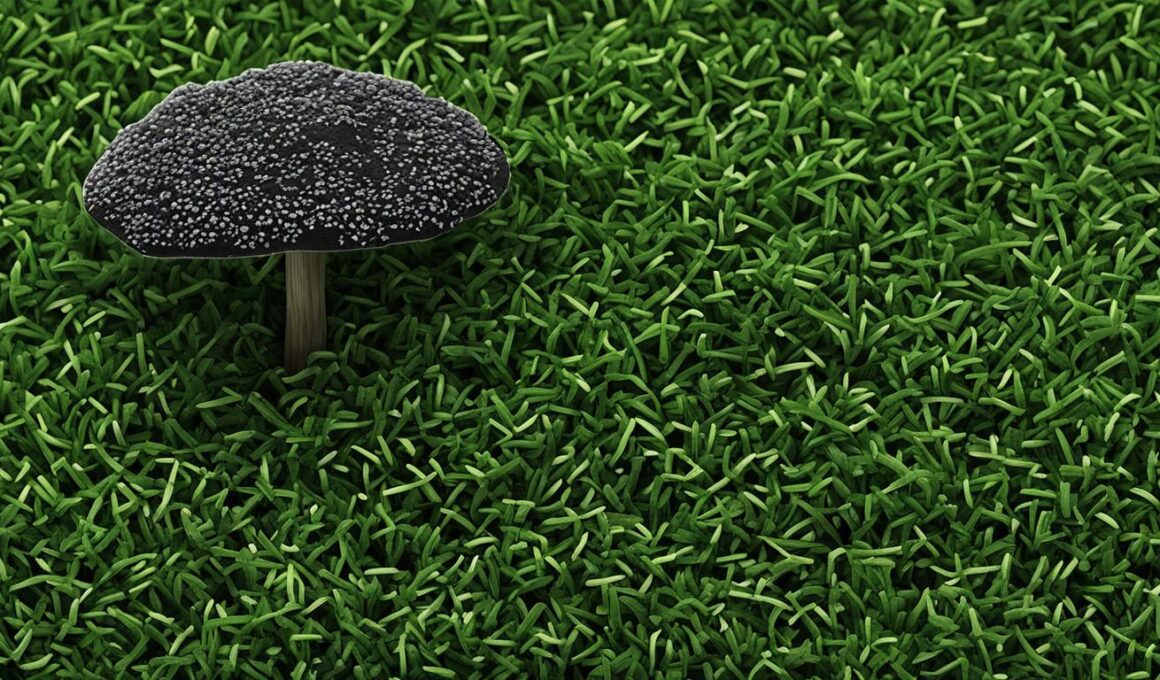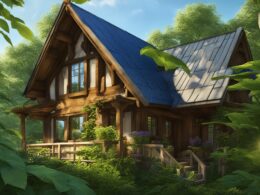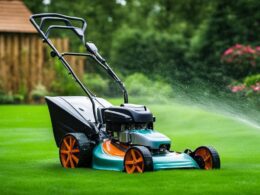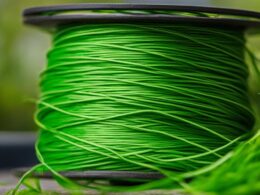Is your St. Augustine grass suffering from unsightly brown patches and straw-colored areas? Don’t worry, you’re not alone. St. Augustine grass is susceptible to various types of fungus, including take-all root rot, brown patch, and grey leaf spot. These fungal diseases can quickly diminish the beauty of your lawn if left untreated. However, with proper prevention and care, you can control and treat St. Augustine grass fungus effectively.
Prevention starts with identification. It’s crucial to determine the specific fungus affecting your lawn before implementing any treatment. Overwatering, temperature changes, and neighboring infected lawns are common causes of St. Augustine grass fungus. By avoiding excessive watering and adjusting your watering schedule to mornings, you can minimize moisture levels and reduce the risk of fungus growth.
In addition to proper watering, ensure proper air circulation and sunlight penetration to your lawn. Clear away shaded areas, trim nearby shrubs, and cut overhanging tree branches to create a healthy environment for your grass to thrive. It’s also important to refrain from using nitrogen-rich fertilizers during cooler months, as the fungus feeds on nitrogen.
If you’re already dealing with St. Augustine grass fungus, treatment options include applying fungicides and top dressing with peat moss. However, it’s highly recommended to seek professional assistance to determine the best treatment plan for your specific fungus and lawn conditions.
Remember, regular maintenance practices such as proper watering, mowing, and aeration can significantly help prevent and control St. Augustine grass fungus. By following these preventative measures and seeking expert guidance, you can keep your lawn healthy, lush, and free from fungus all year round.
What is St. Augustine Grass Fungus?
St. Augustine grass, a popular choice for lawns in the United States, is susceptible to various types of fungus that can hinder its health and appearance. Understanding these fungal diseases is crucial for effective treatment and prevention. Let’s explore the three common types of St. Augustine grass fungus: take-all root rot, brown patch, and grey leaf spot.
Take-All Root Rot
Take-all root rot is a fungal disease that affects St. Augustine and Bermuda grass, causing circular patches of brown or dead-looking grass. This fungus attacks the roots, inhibiting their ability to absorb water and nutrients, leading to weakened and unhealthy turf. The affected patches may expand over time, creating a significant eyesore in your lawn. Prompt diagnosis and proper treatment are necessary to prevent further damage.
Brown Patch
Brown patch is another common fungus that affects St. Augustine grass, particularly during the fall season. This fungus thrives in warm and humid conditions, leading to the development of circular or irregularly shaped brown patches in the lawn. These patches can vary in size and may merge together, resulting in extensive damage. Brown patch can quickly spread if not addressed promptly.
Grey Leaf Spot
Grey leaf spot is a messy and unsightly fungus that leaves oblong, grey-to-ash-brown lesions on the grass blades. This fungus is more prevalent in warm and humid climates and can cause significant damage to St. Augustine grass. If left untreated, grey leaf spot can weaken the grass, making it susceptible to other diseases and stressors.
It’s crucial to properly identify the specific fungus affecting your lawn to implement appropriate treatment. Take-all root rot, for example, requires a different treatment than chinch bug damage, which can have similar symptoms. Seeking professional assistance for accurate diagnosis is recommended to prevent misdiagnosis and potential harm to your lawn.
Now that you’re familiar with the different types of St. Augustine grass fungus, let’s move on to the next section to discover effective prevention and treatment techniques.
How to Prevent and Treat St. Augustine Grass Fungus
Prevention is key to avoiding St. Augustine grass fungus. To prevent its growth, avoid overwatering your lawn, as excess moisture can promote fungal development. Instead, water your lawn in the early morning to allow it to dry throughout the day. Changes in temperature, especially during the spring season, can also contribute to fungus growth. Ensure proper air circulation and sunlight by clearing shaded areas, trimming nearby shrubs, and cutting overhanging tree branches.
Avoid using nitrogen-rich fertilizers during cooler months, as the fungus feeds on nitrogen. Instead, consider using a balanced fertilizer to maintain the health of your grass without creating favorable conditions for fungus.
If you already have St. Augustine grass fungus, treatment options include applying fungicides specifically formulated for this type of fungus. Fungicides are available at gardening centers and should be used according to the instructions provided. In addition to fungicide application, you can consider top dressing your lawn with peat moss, which helps improve the soil’s drainage and reduce moisture retention, making it less conducive for fungus growth.
It is highly recommended to seek professional assistance to determine the best treatment plan for your specific fungus and lawn conditions. A professional can accurately diagnose the type of fungus affecting your grass and recommend the most effective treatment options. In addition to specialized treatment, regular maintenance practices such as proper watering, mowing, and aeration can help prevent and control St. Augustine grass fungus, keeping your lawn healthy and vibrant.
Can St. Augustine Grass Fungus Spread to Palm Trees and Cause Toxicity?
St. Augustine grass fungus can indeed spread to palm trees and cause toxicity. Recent research has revealed the truth behind palm tree toxicity, with discovered evidence showing that the fungus can harm the trees and affect their overall health. It is important to address this issue to ensure the well-being of both grass and palm trees.










